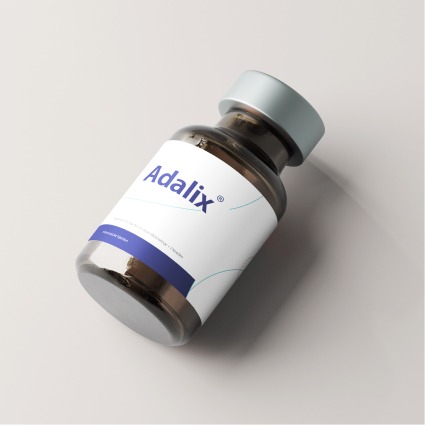Introduction
Elevidys, known scientifically as Delandistrogene moxeparvovec-rokl, is a groundbreaking gene therapy representing a significant milestone in treating Duchenne Muscular Dystrophy (DMD). Approved by the FDA in June 2023, Elevidys is the first gene therapy designed specifically to address the root cause of DMD, a debilitating genetic disorder primarily affecting boys. This therapy offers hope to thousands of patients suffering from this progressive muscle-wasting disease.
This comprehensive article will explore everything about Elevidys—from the science behind its development and mechanism of action to its clinical trials, potential benefits, risks, and future prospects in gene therapy and rare disease treatment.
Duchenne Muscular Dystrophy: Understanding the Disease
Duchenne Muscular Dystrophy (DMD) is a severe form of muscular dystrophy caused by mutations in the dystrophin gene. The dystrophin protein is crucial for maintaining muscle cell integrity, and the absence of functional dystrophin leads to progressive muscle weakness and degeneration. DMD typically manifests in early childhood, with symptoms such as difficulty walking, muscle stiffness, and loss of motor skills. Over time, patients lose their ability to walk, and the disease often affects the heart and respiratory muscles, leading to life-threatening complications.
DMD affects approximately 1 in 3,500 to 5,000 male births globally. Until recently, treatment options were limited to corticosteroids, supportive therapies, and management of symptoms, none of which could address the underlying genetic cause of the disease.
The Mechanism of Elevidys
Elevidys was developed to address the root cause of DMD by delivering a functional copy of the dystrophin gene to muscle cells. Specifically, Elevidys uses an engineered virus, AAV (Adeno-associated virus), to carry a shortened but functional version of the dystrophin gene—called micro-dystrophin—into the muscle cells. This gene enables the production of a partially functional form of dystrophin protein, which can help stabilize muscle cells and slow the progression of muscle degeneration.
Here’s a breakdown of how Elevidys works:
- Gene Delivery: The gene therapy uses a modified AAV vector to deliver the micro-dystrophin gene to muscle cells throughout the body.
- Protein Expression: Once inside the muscle cells, the micro-dystrophin gene is expressed, producing a shorter but functional version of the dystrophin protein.
- Muscle Stabilization: This newly produced micro-dystrophin stabilizes the muscle cell membrane, reducing damage during muscle contraction and ultimately slowing the progression of muscle degeneration.
- Sustained Effect: Unlike conventional treatments that must be continuously administered, Elevidys is a one-time intravenous infusion with a long-lasting effect.
Clinical Trials and FDA Approval
Elevidys underwent rigorous clinical trials to evaluate its safety and efficacy in treating DMD. The trials demonstrated promising results, with patients showing significant improvement in muscle function and stabilization of muscle degeneration.
Key Clinical Trial Results:
– Primary Endpoint: The primary endpoint of the Elevidys trials was an increase in dystrophin protein levels in the muscle cells of treated patients. The therapy successfully restored micro-dystrophin production in the majority of patients.
– Motor Function Improvement: Patients treated with Elevidys exhibited improved motor function, including better muscle strength and endurance than those receiving placebo.
– Safety Profile: While the therapy showed efficacy in increasing dystrophin levels and improving muscle function, there were some reports of adverse events, including elevated liver enzymes and immune responses. These side effects were generally manageable with appropriate medical intervention.
Based on these positive results, the FDA granted Elevidys approval for use in DMD patients aged four to five, marking a significant advancement in the treatment of this devastating disease.
Benefits of Elevidys: A New Era of Treatment for DMD
Elevidys offers several critical benefits to DMD patients that differentiate it from existing treatments. These include:
- Targeting the Underlying Cause: Unlike corticosteroids and other symptomatic treatments, Elevidys addresses the root genetic cause of DMD by introducing a functional copy of the dystrophin gene. This approach offers the potential to halt or significantly slow disease progression.
- One-Time Treatment: Elevidys is administered as a single intravenous infusion, contrasting with the daily medications required for traditional therapies. The potential for a durable response makes Elevidys a game-changer for patients and caregivers.
- Improved Quality of Life: Clinical trials have shown that Elevidys can improve motor function, allowing patients to maintain independence for longer periods. This translates into a better quality of life, with increased mobility and a slower rate of muscle deterioration.
- Slowing Disease Progression: While Elevidys does not cure DMD, it can significantly slow the progression of the disease, potentially extending life expectancy and reducing the need for more intensive medical interventions later in life.
Risks and Considerations
Despite its promising benefits, Elevidys is not without risks. As with any gene therapy, potential side effects and long-term considerations need to be considered.
Immune Response
One of the primary risks associated with gene therapy using viral vectors like AAV is the potential for the body’s immune system to recognize and attack the virus. This can lead to immune-related side effects, such as inflammation and the elevation of liver enzymes. Patients may be pretreated with corticosteroids or other immunosuppressive drugs to mitigate this risk.
Liver Toxicity
Elevated liver enzyme levels were observed in some patients during clinical trials. While this side effect was generally manageable, it requires close monitoring, as liver toxicity can have serious consequences.
Long-term Durability
Although Elevidys has shown durable effects in the short term, questions remain about its long-term durability. As a relatively new treatment, it’s still unclear how long the therapy’s effects will last and whether patients will require additional treatments in the future.
Limited Eligibility
Not all DMD patients are eligible for Elevidys. The therapy is currently approved for use in children aged four to five, and it’s specifically designed for patients with certain mutations in the dystrophin gene. Additional research is needed to expand eligibility criteria and determine whether older patients or those with different mutations can benefit from this treatment.
The Future of Elevidys and Gene Therapy
Elevidys represents the cutting-edge gene therapy for DMD, but its approval also opens the door for broader applications of gene therapy in rare genetic diseases. As researchers and clinicians continue to refine and improve gene therapies, the future looks promising for both DMD patients and those suffering from other genetic disorders.
Expanded Indications
Elevidys’s current approval is limited to a specific age group and mutation type, but ongoing clinical trials are exploring its efficacy in broader populations. Future research may extend its use to older patients and those with different genetic mutations.
Combination Therapies
One potential avenue for future research involves enhancing Elevidys’ effectiveness by combining it with other treatments, such as exon-skipping therapies or gene-editing technologies like CRISPR. Combination therapies could target different aspects of DMD pathology and further improve patient outcomes.
Improved Gene Delivery Vectors
While AAV is currently the most commonly used viral vector for gene therapy, ongoing research is focused on developing improved vectors that can deliver genes more efficiently, target specific tissues, and reduce the risk of immune responses. Future iterations of gene therapies like Elevidys could benefit from these advances, making treatments safer and more effective.
Cost and Accessibility
One of the biggest challenges with gene therapies like Elevidys is their cost. As a highly specialized treatment, Elevidys comes with a high price tag, which can limit patients’ access. However, as the field of gene therapy grows and manufacturing processes are streamlined, the cost of these treatments may decrease, making them more accessible to a broader range of patients.
Economic and Societal Impact of Elevidys
The approval of Elevidys has significant implications for patients and their families, the healthcare system, and society at large.
Healthcare Cost Reduction
While Elevidys is expensive upfront, it can potentially reduce long-term healthcare costs by slowing the progression of DMD and reducing the need for ongoing symptomatic treatments, hospitalizations, and supportive care. In the long run, gene therapy could be a cost-effective option for managing chronic genetic diseases.
Employment and Quality of Life
For patients with DMD, maintaining mobility and muscle function for longer can translate into greater independence and a higher likelihood of staying active in school, work, and social environments. This has a broader societal impact by allowing individuals to contribute to the workforce and reducing the burden on caregivers and healthcare systems.
Conclusion
Elevidys marks a pivotal moment in treating Duchenne Muscular Dystrophy and the broader field of gene therapy. By addressing the underlying cause of DMD, this one-time treatment offers patients the potential for improved muscle function, slowed disease progression, and an enhanced quality of life. While there are still questions regarding long-term durability, side effects, and broader accessibility, the approval of Elevidys represents a significant step forward in the fight against DMD and other rare genetic disorders.
As research continues, the future of Elevidys and gene therapy holds promise for expanded indications, combination treatments, and improved delivery mechanisms. These advancements could offer even greater hope to patients with Duchenne Muscular Dystrophy and other genetic disorders. With ongoing innovations in gene therapy, the potential to transform the lives of individuals suffering from previously untreatable conditions becomes ever more achievable, paving the way for a new era in personalized medicine and rare disease treatment. The long-term prospects for Elevidys, combined with the growing field of genetic therapies, suggest that we are just at the beginning of what could be a revolutionary shift in how genetic diseases are understood and managed.
Discover how Opal Biopharma is advancing biologic therapies for immune disorders, oncology, and metabolic conditions.

